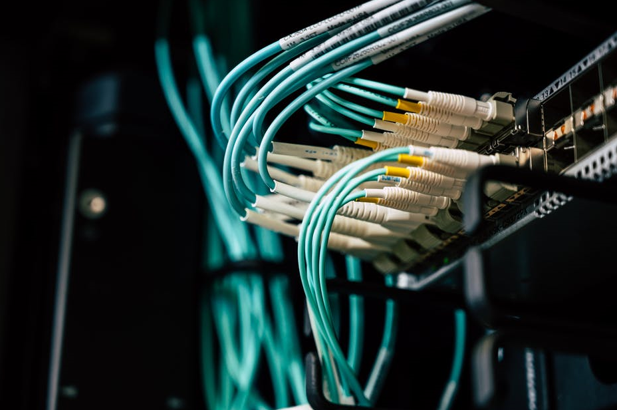Technology
4 Essentials for Successful Computer Network Installation

In today’s digital world, businesses need reliable computer networks to stay connected and productive.Whether you’re starting fresh or upgrading your current system, knowing what goes into a successful setup can save time, money, and stress. From picking the right equipment to keeping your data secure, each step plays a big role in building a system that runs well and lasts.
This article breaks down the four key parts of computer network installation-planning, hardware, security, and testing-so you can build with confidence. Keep reading to make sure your network is built for long-term success.
1. Planning the Layout
Effective planning is the crucial first step to establishing a reliable computer network. A well-thought-out layout considers factors such as building architecture, optimum device placement, and future expansion needs. Notably, businesses in various sectors may require different configurations based on their unique operations.
Here are key points to consider when planning your network layout:
Device Count
Start by counting all the devices that will use your network, like computers, phones, printers, and tablets. Each one needs a stable connection and uses part of your internet speed. Knowing the total helps you avoid slowdowns and keep everything running well.
Planning for the right number of devices makes your network stronger. It helps stop connection problems before they start. This way, your system works smoothly every day.
Signal Strength
Put your routers and access points in open areas so the signal can reach every room. Avoid placing them near walls, metal, or big furniture that can block the signal. Selecting the ideal location helps your network maintain strength and stability.
Good placement gives better coverage and fewer dead zones. All your devices will stay connected without drops. This keeps your internet fast and reliable all day.
Future Scalability
Anticipating future growth by allocating extra capacity in your network is a long-term strategy. As your business evolves and more devices are introduced, this foresight ensures seamless integration without disruptions. By building with scalability in mind, you avoid costly infrastructure overhauls and maintain consistent performance.
2. Selecting the Right Hardware
Choosing high-quality hardware is essential for maintaining your network’s effectiveness. Investing in reliable devices will minimize downtime and ensure longevity. Here are some essential hardware components:
Routers and Switches
Routers and switches are the backbone of your network, so choose them wisely. Go for routers with dual-band tech to handle both light and heavy traffic. Use Gigabit Ethernet switches to keep speeds fast, even with multiple devices online.
Cabling
Using high-quality cables like Cat6 Ethernet helps your network stay fast and stable. Cheap or outdated cables can drag down speed and cause connection problems. Investing in better cabling keeps everything running smoothly day after day.
Access Points
In bigger areas, adding more access points helps spread the signal evenly. This keeps users connected without drops or slowdowns. With better coverage, everyone gets a smoother and faster online experience.
3. Securing Your Network
Security is paramount in maintaining a reliable computer network. As technology evolves, threats become more sophisticated, making it crucial to implement robust security measures. Here are some effective strategies to safeguard your network:
Firewalls
Firewalls are your network’s first line of defense against outside threats. They act as a shield, blocking unwanted network traffic from reaching your system. Using them helps protect sensitive data and keeps hackers out.
Both hardware and software firewalls play a key role. Hardware Hardware firewalls filter traffic before reaching your devices, while software firewalls provide internal protection for each device. Together, they build a stronger, more secure network.
Encryption
Securing your wireless network with encryption is a smart move. Protocols like WPA3 scramble the data, making it hard for outsiders to read. This helps keep your information safe while it moves across the network.
Even if someone manages to catch the signal, strong encryption keeps the data locked. Hackers can’t make sense of it without the right key. That extra layer of protection gives your network more privacy and peace of mind.
Regular Updates
Keeping your devices and software updated is one of the easiest ways to stay secure. Updates fix bugs and close security gaps that hackers might use. Skipping them can leave your network open to attacks.
Make regular maintenance a habit to catch problems early. Set a schedule to check for updates and install the latest patches. This helps your system run smoother and keeps your data safe.
4. Testing Network Performance
After computer network installation, testing performance helps make sure everything runs at top speed. Regular checks can spot small issues before they turn into bigger problems. Use these simple methods to test and monitor your network.
Speed Tests
Speed test tools show how fast your internet is working. They check download and upload speeds to see if they match your internet plan. This helps you know if your network is performing well.
Running these tests often can catch slow speeds early. If the results are too low, there may be a problem. Fixing it quickly keeps your network smooth and reliable.
Network Monitoring Tools
Network monitoring tools help you see how your system is used. They track traffic and show when your network gets busy. This makes it easier to spot problems early.
Tools like Wireshark check the data moving through your network. They can find slow spots or unusual activity. This helps keep your network safe and running well.
Feedback Loops
Regularly collecting feedback from users offers valuable insights into the real-world performance of your network. While technical tests provide data, user experience reveals issues that numbers may miss. Complaints regarding lag, disconnections, or slow loading times often indicate trouble areas that require closer scrutiny.
By listening to users, you gain a clearer understanding of how the network functions day-to-day. Their input can highlight weak coverage zones or times when the system slows down. Addressing these concerns not only improves performance but also builds trust and satisfaction among users.
Build It Right, Keep It Strong
Setting up a reliable computer network isn’t just about getting connected-it’s about building a system that works well every day. Focusing on smart planning, suitable hardware, strong security, and thorough testing creates a network that supports your team and adapts to your needs. These steps help prevent problems, save time, and make work run smoother.
If you’re ready to upgrade or install a network, don’t cut corners-follow these core steps for lasting results. For more helpful tips and insights, check out the rest of our blog.
-

 Celebrity1 year ago
Celebrity1 year agoWho Is Jennifer Rauchet?: All You Need To Know About Pete Hegseth’s Wife
-

 Celebrity1 year ago
Celebrity1 year agoWho Is Mindy Jennings?: All You Need To Know About Ken Jennings Wife
-

 Celebrity1 year ago
Celebrity1 year agoWho Is Enrica Cenzatti?: The Untold Story of Andrea Bocelli’s Ex-Wife
-

 Celebrity1 year ago
Celebrity1 year agoWho Is Klarissa Munz: The Untold Story of Freddie Highmore’s Wife
















